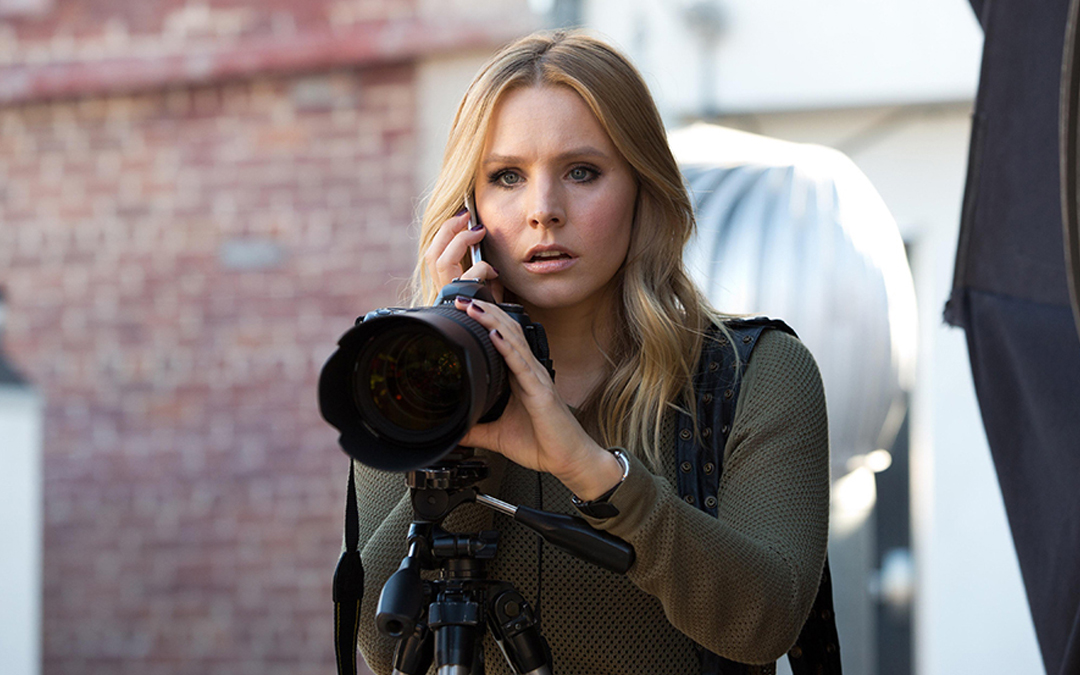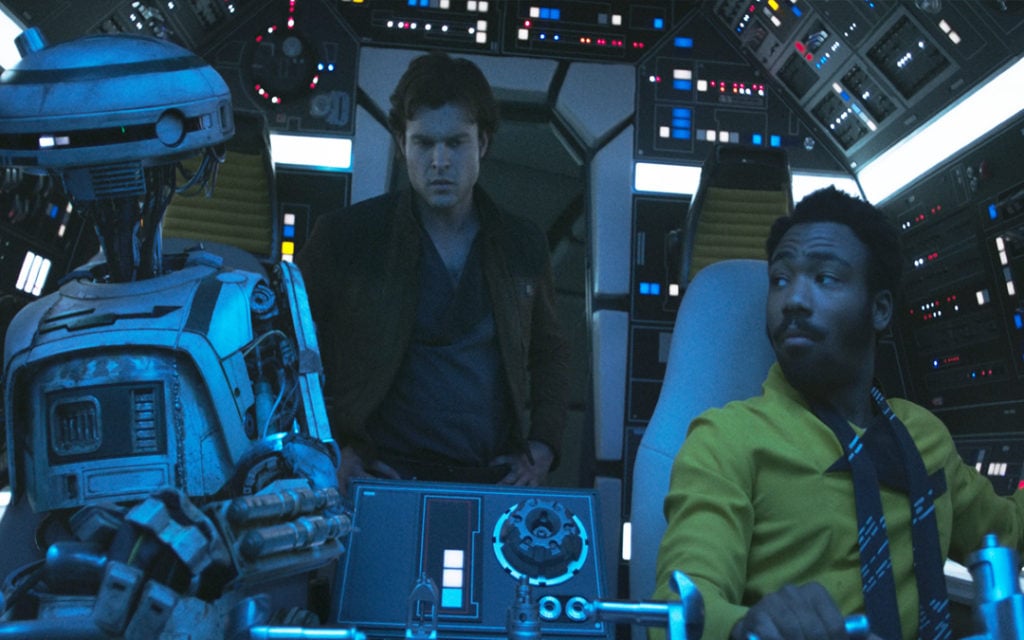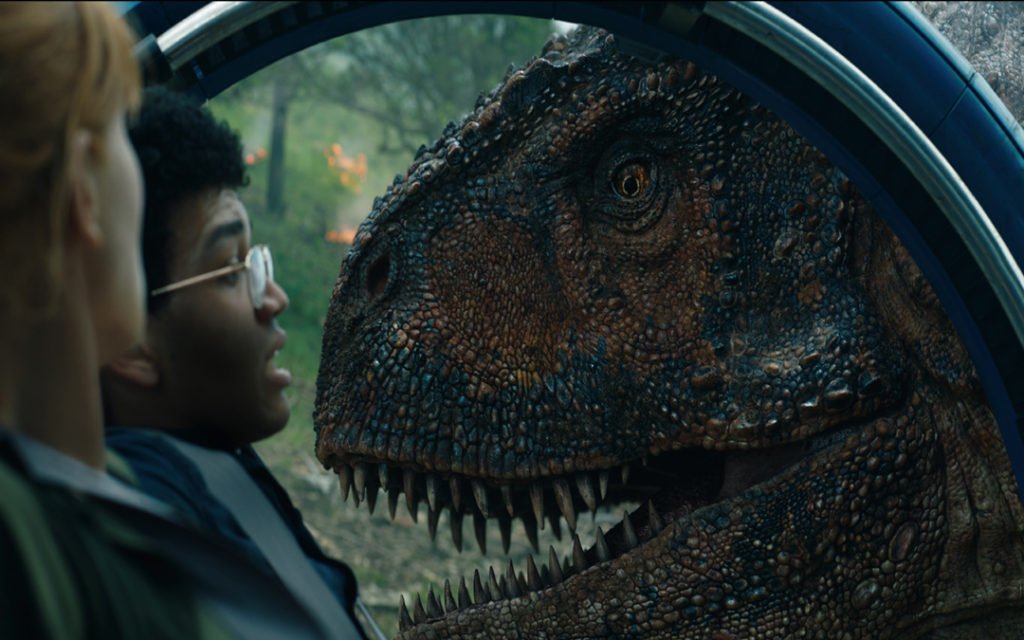All the Write Moves: Creed II
December 10, 2018
The myriad parallels between the ups and downs of the Rocky franchise and the way the franchise’s two protagonists navigate athletic careers are fascinating. In the first six movies, spanning 1976 to 2006, simple but noble boxer Rocky Balboa (Sylvester Stallone) experiences everything from euphoric success to heartbreaking loss. In 2015’s excellent Creed, Rocky becomes a supporting character as young fighter Adonis Creed (Michael B. Jordan), the son of Rocky’s late best friend, takes over as the franchise’s new leading character.
Now comes the real test — whether a series of Creed movies will demonstrate the same durability as the series from which they grew. Based on the evidence of Creed II, the answer looks as if it might be yes. While neither as innovative nor passionate as Creed, the new movie is at the very least much better than the franchise’s first attempt at a follow-up, Rocky II (1979). This bodes well. Creed II is formulaic and obvious, but it’s also emotional and exciting — which is to say that it’s on par with the best pictures this franchise has produced.
Ryan Coogler, the wunderkind filmmaker who co-wrote and directed Creed, serves only as executive producer on the new picture, but his successors deliver respectable work. New director Steven Caple Jr. emulates Coogler’s style well, and the Creed II screenwriting team — story authors Cheo Hodari Coker and Sascha Penn, together with screenwriters Juel Taylor and Stallone — strike a good balance between meeting the franchise’s deeply ingrained expectations and throwing a couple of surprising gut punches.
Setting the table
Partially by using sports-TV broadcasts as tools for delivering exposition, Creed II does a smooth job of welcoming new viewers into the franchise; a process that might be called setting the table before the meal. In order to help the viewers of a sequel enjoy the characters’ emotional journey, it’s necessary to present a significant amount of backstory. Counterintuitive though it may seem, this same principle manifests when creating original films.
Consider the way Creed II methodically introduces one element at a time. The first scene depicts a mysterious young man exiting his grim housing project in Ukraine for a tough training regime overseen by an older man whom we assume is the athlete’s father. Viewers new to the franchise may not know who these characters are, but the themes of ambition and family are clear. Then the picture cuts to Adonis winning the heavyweight championship of the world, after which he gets a pep talk from his beloved trainer, Rocky, before Adonis proposes to his girlfriend, Bianca (Tessa Thompson). Again, even viewers unfamiliar with the previous film can easily glean the broad strokes of what’s happening.
Shortly afterward, the film reveals that the father from the opening sequence is Ivan Drago (Dolph Lundgren), the Russian boxer who killed Adonis’ father in the ring, and that Ivan’s son, Viktor (Florian Munteanu), is on the hunt for a championship match against Adonis. Barely 10 minutes into the movie, nearly all the major pieces of the narrative are in place. That’s not just efficient storytelling for a sequel. It’s efficient storytelling, period.
The lesson is that if you, the writer(s) of an original stand-alone script, endeavor to set your narrative table as efficiently as you would when introducing new viewers to an established world in a sequel, you’ll be in good shape.
Takeaway: Welcome viewers into your story like guests into your home
Separation anxiety
Since the first Creed was all about establishing an emotional bond between Adonis and Rocky, it’s perhaps predictable that the story of Creed II pushes them apart — but that doesn’t make watching the process any less interesting (call it the enduring magic of this particular franchise; what might seem cheesy and manipulative in any other film series feels organic and rewarding in the best Rocky movies). In Creed II, Adonis makes a bad decision that causes Rocky to walk away because he can’t be part of Adonis endangering himself.
Will these two men overcome their differences? That’s like asking whether the movie will eventually feature the blaring horns of Bill Conti’s theme from the original Rocky movie. The point isn’t so much how this arc resolves, but why it’s such a satisfying arc. In life, we value the relationships that we build, and we mourn relationships that fall apart before their time. Movies provide inspiration and wish fulfillment by suggesting that even the toughest breaks can be repaired.
Creed II also provides a strong template for how to execute this maneuver: The rift occurs roughly at the end of Act One; Adonis pays a terrible price for his hubris during Act Two-A, the reconnection occurs roughly at the midpoint, and viewers get to revel throughout Act Two-B and Act Three in a beautiful relationship that’s been tested by adversity.
Takeaway: Rebuilding broken bonds strikes a strong emotional chord
Sympathy for the devil
There’s an old showbiz axiom about leaving the audience wanting more, and in cinema terms, sometimes that means that an interesting subplot gets reduced to its essence in order to ensure the overall story has momentum. After watching Creed II, some viewers may wish the picture had spent more time with Ivan and Viktor, because nearly every scene they share reveals a world of anguish and hardship and regret that, out of necessity, the movie can only sketch instead of fully illustrating. (Caution: Mild spoilers follow).
Right from the aforementioned first scene of the movie, we learn that life hasn’t been easy for Ivan — or, by extension, his son — since the defeat Ivan suffered in Rocky IV (1985). Creed II reveals that Ivan’s loss was seen as an embarrassment to the Soviet government, so Ivan fell from a position of considerable status to a pitiful rank on the lower rungs of the working class. Symbolic of Ivan’s decline is the fact that Ludmilla (Brigitte Nielsen), his glamorous wife back in the ’80s, left him after giving birth to Viktor and never got to know her son. Ivan and Viktor don’t have much, but they have each other.
Even though viewers are meant to root for Adonis, the makers of Creed II avoid presenting Viktor as a one-dimensional contrivance, which is the fate that befell Ivan in Rocky IV.
Different storytelling styles work for different reasons in different eras. Rocky IV was released at the height of the Cold War, so presenting Ivan as a symbol of cruel Soviet aggression was an effective means of rousing interest among American audiences. The same methodology wouldn’t work today — contemporary audiences expect more nuanced storytelling than that. Modernizing the style of the franchise pays strong dividends. During the final sequence, as much as we might want Adonis to triumph, we recognize that his victory will come with a human cost for Viktor. This adds tension, because we understand that, like Adonis, Viktor is fighting for something meaningful, too.
Takeaway: Give your villains as much dimension as you give your heroes
Written by: Peter Hanson
Peter Hanson is a Los Angeles-based writer, filmmaker and teacher. He directed the screenwriting documentary Tales from the Script, and he teaches at Pepperdine University and UCLA Extension. He provides script consulting at www.GrandRiverFilms.com.- Topics:
- Discussing TV & Film




